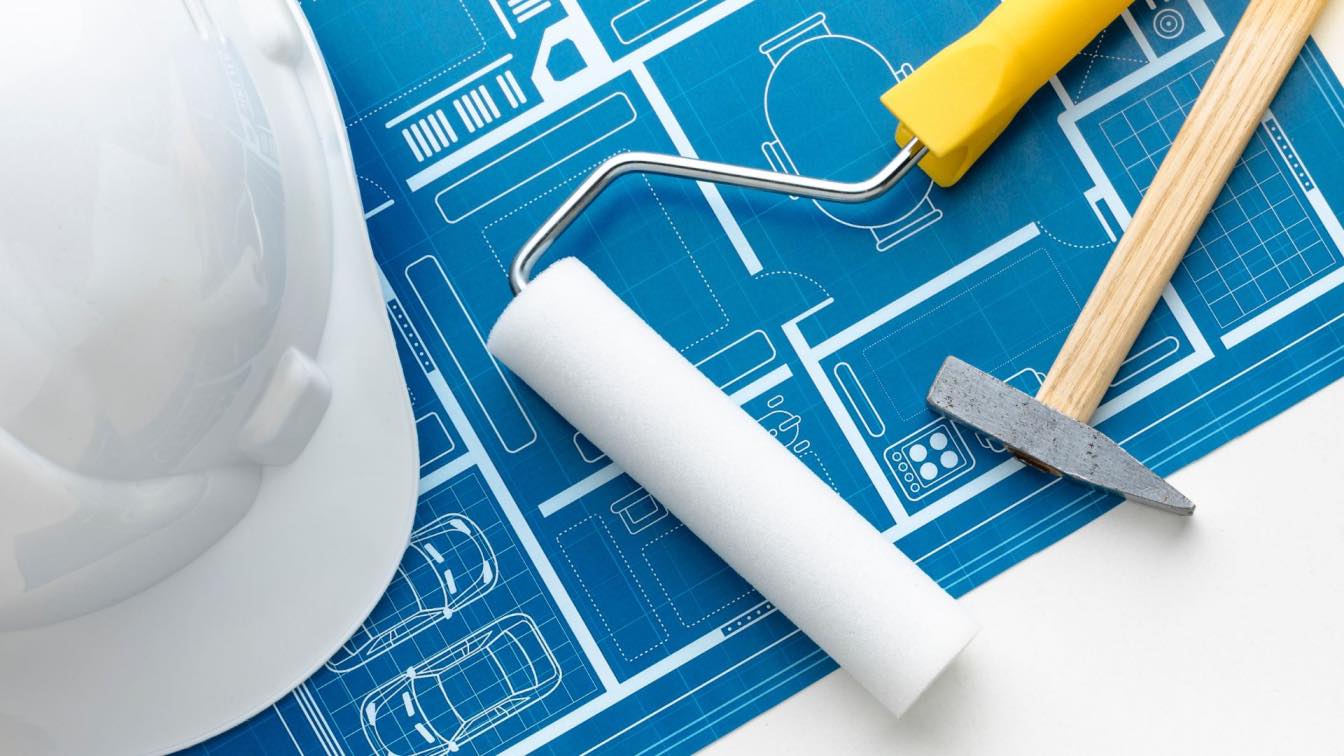Architects' dreams are transformed into tangible reality with the accuracy of construction estimates. Where budgets align seamlessly with creative visions and project timelines are met with precision. For this, architects and estimators collaborate to build accurate estimates that serve as the compass guiding architectural projects toward realization.
In this article, we'll delve into the vital role of accurate construction estimations in enhancing architectural design, demonstrating how they are not just numbers on a spreadsheet but the foundation upon which architectural dreams are built.
Image by Freepik
The Significance of Accurate Construction Estimations
In commercial real estate projects, precision isn't merely a desirable attribute; it's an absolute necessity. Accurate construction estimates form the foundation upon which architectural marvels are constructed, and their significance cannot be overstated. The impact of estimations on budgets and financing is monumental. Whether you're a client, developer, or construction company, the accuracy of pre-design construction estimates can make or break your project.
So, what influences the accuracy of these estimations? It's a delicate dance, influenced by factors like available plans and the reliability of the estimating company. The more information at hand and the more trustworthy the estimator, the more accurate the estimation.
Balancing Act: Underestimates and Overestimates
Imagine this scenario: underestimating your construction costs. It might seem like a dream come true initially, but as the project progresses, you find yourself juggling budgets and scrambling for extra funds. On the flip side, overestimating can lead to unnecessary costs and a drained budget that could have been allocated elsewhere.
The key here is striking the perfect balance. Accurate estimations hit that sweet spot where budgets are neither tight nor loose, allowing architects to unleash their creative genius within financial constraints.
The Role of Historical Data and Project Size
Historical data is akin to a treasure trove for estimators. It's a goldmine of information that, when leveraged correctly, can lead to estimates within a +/- 5–10% range for companies. But that's not all—the size of the project also plays a role. Larger construction projects often boast smaller cost variances due to better pricing on larger supply orders.
Precision for Budget Constraints
Accurate estimations ensure that the envisioned design aligns with the budget constraints, avoiding financial crises that could jeopardize the project. This financial harmony enables architects to explore their creative boundaries without fear of financial setbacks.
Precision for Timelines
Tight project schedules often govern the architectural world; even the slightest delay can have cascading effects. Accurate estimations play a pivotal role in meeting project timelines. When the materials, labor, and resources are precisely estimated, architects can plan accordingly, ensuring that the project stays on track, avoids costly delays, and ultimately gets completed on time.
So, let's explore how precision meets design excellence through the collaborative efforts between architects and estimators, all while staying within budget and adhering to timelines.
Collaborative Efforts: Architects and Estimators
Architectural marvels are rarely the result of a solitary endeavor. Instead, they often emerge from the seamless collaboration between architects, the creative visionaries, and estimators, the meticulous calculators. This partnership is the linchpin that ensures projects meet and often exceed design goals.
Architects conceive brilliant designs that push the boundaries of creativity, but with estimators, these visions may be fulfilled in their fantasies. Estimators bring a practical perspective to the table, deciphering the intricate details of architectural plans into quantifiable terms. This collaborative effort ensures that every facet of the design is accounted for, from materials and labor to project timelines.
Achieving Design Goals with Budget
Architects can dream big, knowing that estimators are there to provide a realistic roadmap to transform those dreams into tangible structures. This partnership is a delicate balance where innovation meets pragmatism, allowing architects to push their creative boundaries while staying grounded in feasibility.
One of the most tangible benefits of accurate construction estimations is achieving design goals within budgetary constraints. Here's how:
Accurate Estimations as Budgetary Guardians
Accurate estimations serve as vigilant guardians of the project's budget. Architects and estimators work in tandem to ensure that every material, every labor hour, and every resource is meticulously accounted for. This prevents budget overruns, which can be catastrophic for any architectural project. It means that architects can confidently design without the nagging fear of breaking the bank.
Real-Life Examples
To illustrate the power of accurate estimations in achieving budget design goals, consider the Sydney Opera House case. This iconic architectural masterpiece, designed by Jorn Utzon, faced considerable budgetary challenges during construction. However, meticulous estimations and innovative cost-saving solutions, such as using precast concrete shells, helped bring this ambitious design to fruition within the budget, solidifying its status as a global architectural marvel.
Another notable example is the Burj Khalifa, the tallest skyscraper in the world. Its awe-inspiring height and intricate design could have easily spiraled out of budget. Yet, the collaboration between architects and estimators ensured that every aspect of the project was meticulously estimated, allowing the Burj Khalifa to rise to its unprecedented height without compromising on financial prudence.
These real-life instances underscore how accurate estimations serve as the lighthouse guiding architectural projects.
Meeting Timelines Through Estimations
Accurate construction estimations serve as the project's temporal compass, allowing architects and builders to navigate the intricate labyrinth of tasks and deadlines. When estimates are precise, project managers can plan resources and labor allocations more effectively, ensuring that each phase of the project unfolds as scheduled. This precision also enables better coordination among various teams and stakeholders, minimizing delays.
Conversely, inaccurate estimations can have cascading effects on project schedules. Delays caused by unforeseen budget overruns or resource shortages can disrupt the timeline, leading to increased costs and frustration. Inaccuracies can also result in rushed decision-making, compromising the quality of work and potentially compromising safety standards. Therefore, the stakes are high, and the consequences of inaccurate estimations can be far-reaching.
The Role of Estimation Software
Now, you might wonder, how can one achieve such accuracy? It starts by working with firms experienced in your specific project type. Estimation software harnesses the power of algorithms and data analysis to generate precise estimations. These tools can factor in many variables, from material costs and labor rates to regional pricing fluctuations, delivering estimations that are as close to reality as possible. This not only reduces the margin for error but also streamlines the estimation process, saving valuable time.
Tools like RS Means, ProEst, PlanSwift, and STACK are invaluable, providing a robust framework for estimations. These software solutions cater to various aspects of construction estimating, from quantity takeoffs to cost analysis. They are widely adopted in the industry for their ability to enhance accuracy and efficiency.
The role of estimation software extends beyond mere number crunching; it empowers architects and estimators to work collaboratively with cutting-edge tools, making the estimation process more reliable and streamlined. As technology advances, we can expect estimation software to play an increasingly pivotal role in shaping the future of architectural design and construction.
But here's the catch: fully accurate construction costs are typically only available when architectural and engineering drawings are 80–90% complete. Until then, estimations are our guiding light.
Contributing to Sustainable Architectural Design
Precise estimations play a significant role in sustainable architectural designs. They allow architects to select materials with lower environmental impact, accurately calculate energy-efficient systems, and optimize resource usage. This leads to strategies that meet aesthetic and functional goals and reduce the ecological footprint of construction projects.
Sustainable architectural designs often use eco-friendly materials like reclaimed wood, recycled steel, and energy-efficient glass. Accurate estimations enable architects to incorporate these materials into their designs, ensuring that sustainability goals are met without exceeding budget constraints. Additionally, estimates help calculate the long-term cost savings associated with sustainable practices, making a compelling case for environmentally conscious design.
Conclusion
In conclusion, the fusion of collaboration and precision in the architectural industry forms the bedrock upon which innovative designs flourish. As technology advances, architects and estimators will find themselves equipped with powerful tools that enhance accuracy and usher in a new era of architectural innovation. The future of architectural design is bright, guided by the partnership of creative visionaries and meticulous estimators working together to bring dreams to life.





